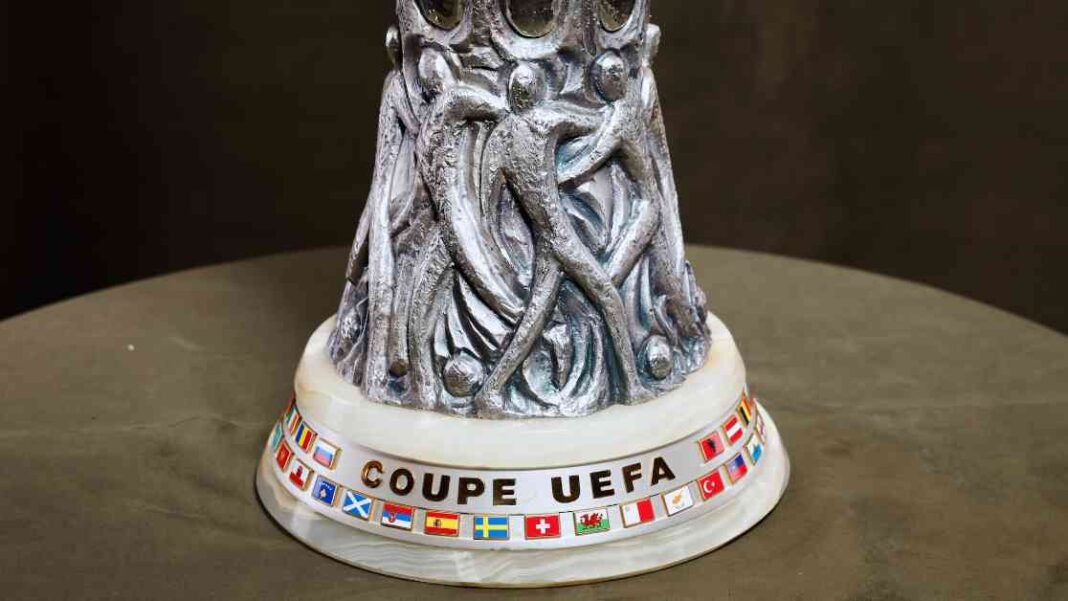UEFA Europa League Teams‘ Ranking System Explained
The UEFA Europa League has introduced a new phase involving 36 clubs, all listed on a table for easy reference. At the end of this phase, teams ranking from 1st to 8th directly qualify for the knockout stages. Teams placed 9th to 24th will participate in playoff rounds, while those at the bottom, from 25th to 36th, will be eliminated.
Handling Points Ties During the Ligaphase
In the event of teams being tied on points during the Ligaphase, a specific set of criteria is used to determine their rankings. Before the 1st matchday, teams were initially ordered alphabetically based on their abbreviated names. Between matchdays 1 and 7, tied teams are sorted according to the following criteria:
a. Better goal difference during the Ligaphase
b. Higher number of goals scored during the Ligaphase
c. More away goals scored during the Ligaphase
d. Greater number of wins during the Ligaphase
e. More away wins during the Ligaphase
If teams remain equal after applying these criteria, they will be placed equally in the table based on the alphabetical order of their abbreviated names. From matchday 8 onwards, teams will be ranked using all criteria from a to j.
Separating Teams in Case of Equal Points
When two or three teams finish the Ligaphase with the same number of points, the following criteria will be used to determine their positions in the table:
a. Better goal difference during the Ligaphase
b. Higher number of goals scored during the Ligaphase
c. More away goals scored during the Ligaphase
d. Greater number of wins during the Ligaphase
e. More away wins during the Ligaphase
f. Higher total points of opponents during the Ligaphase
g. Better total goal difference of opponents during the Ligaphase
h. Greater total number of goals scored by opponents during the Ligaphase
i. Lesser total number of penalty points based on yellow and red cards received by players and team officials in all Ligaphase matches (red card = 3 points, yellow card = 1 point, expulsion after two yellow cards in a match = 3 points)
j. Higher club coefficient
This detailed ranking system ensures fairness and accuracy in determining the standings of teams in case of ties. It also adds an extra layer of excitement and strategy to the competition, as clubs vie for the top positions in the table.
The Ligaphase of the UEFA Europa League provides a unique format for clubs to compete and showcase their talent on a European stage. With 36 teams battling it out over a series of matches, the competition is fierce and the stakes are high. The ranking system in place ensures that only the best teams progress to the knockout stages, making every match crucial for the clubs involved.
Implications and Strategies for Clubs
For teams participating in the UEFA Europa League, understanding the ranking system and how ties are resolved is crucial for success in the competition. Clubs must not only focus on securing victories but also on maximizing their goal difference, scoring more goals, and performing well in away matches to improve their chances of advancing to the next round.
Having a clear understanding of the criteria used to separate tied teams can also influence a club’s strategy during matches. For instance, a team may prioritize defensive stability to maintain a positive goal difference or focus on attacking play to boost their goal-scoring record. Away matches become even more important, as goals scored on the road carry additional weight in the ranking system.
Clubs with a strong disciplinary record, in terms of avoiding yellow and red cards, may also gain an advantage in tiebreaker situations. By minimizing penalty points accrued from disciplinary actions, teams can improve their overall standing in the table and enhance their chances of progressing in the competition.
Conclusion
In conclusion, the Ligaphase rules of the UEFA Europa League provide a transparent and comprehensive system for ranking teams in case of points ties. By utilizing a set of specific criteria, the competition ensures that the best-performing clubs advance to the knockout stages, rewarding consistency, goal-scoring prowess, and overall performance throughout the phase.
As clubs continue to battle it out in the UEFA Europa League, the ranking system adds an extra layer of excitement and intrigue to the competition. With each match carrying significant implications for the standings, teams must be strategic in their approach to secure favorable outcomes and progress in the tournament. By understanding the criteria used for tiebreakers and striving for excellence in all aspects of their play, clubs can maximize their chances of success in this prestigious European competition.















